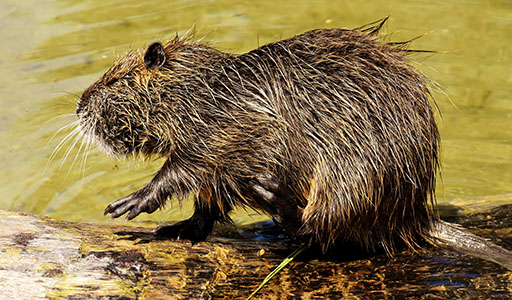Nutria

Nutria Information
The semiaquatic coypu, or nutria, is considered an invasive species. Once coveted in the United States for their fur, these rodents have since become a collective menace to local ecosystems. They’ve wreaked havoc on the wetlands of the Gulf Coast; their large appetites have left areas almost devoid of vegetation, and their burrows can cause lasting damage to the land and man-made structures. Nutria can be detrimental to a homeowner’s yard, or any outdoor area thriving with plant life, and the legal protections nutria have been granted in many states make the already complex solutions to dealing with these creates nearly impossible to carry out efficiently. That’s why you should call Trutech.

What does a Nutria look like?
The brown-furred rodents typically grow about 24 inches long, have 12-inch hairy tails, and weigh between 10 and 20 pounds. Their forepaws have sharp claws that enable them to dig extensive burrows and scavenge for underwater plants and tubers. Nutria have webbed hind paws and can hold their breath underwater for 5 to 10 minutes at a time, which makes them formidable swimmers. They have large incisors used to chew the stalks, stems, and bark of plants and trees.

What does a Nutria eat?
Nutria are known to scavenge underwater for roots, tubers, and stems of aquatic plants, which make up the large majority of their diet. A special set of lips allows the animals to use their teeth to chew while submerged without letting water into their mouths. The rodents have also been known to take advantage of crops located near water sources, such as rice paddies and other irrigated plants.

Nutria habitats
Living along the South Coast, East Coast, and Pacific Northwest, nutria prefer wetland habitats. They use their claws to dig burrows for their families into the sides of steep embankments. Entrances are usually located underwater. Some burrows grow quite large, with multiple levels, long tunnels, and several chambers used for sleeping and nursing. Occasionally, the animals also construct floating mats of vegetation upon which they rest or feed.


